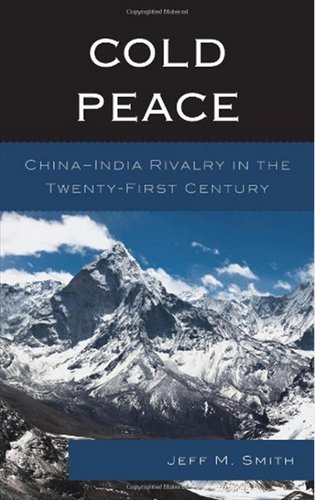HOME >> OP-ED
Rivalry between China and India can be resolved through ‘cold peace’
Source:Global Times Published: 2014-1-23 23:08:01

Cold Peace: China-India Rivalry in the Twenty-First Century, Jeff M. Smith, Lexington Books, December 16, 2013
The world may witness a dramatic change in the global pattern in the 21st century, in which several powers will rise and the US won't be able to maintain its dominance. China is widely expected to be the one with the biggest potential. But besides China, what other nations can be seen as possible players?
Jeff M. Smith, director of South Asia Programs and Kraemer Strategy Fellow at the US-based American Foreign Policy Council, gives a possible scenario in his latest book Cold Peace: China-India Rivalry in the Twenty-First Century.
He states in the first sentence of the foreword of this book, "the 21st century will witness China and India reclaim their positions atop the global hierarchy of nations."
The author predicts that China and India, the two largest Asian civilizations, will join the US in an elite club of global superpowers. Both nations not only share prospects of becoming the most vigorous and prosperous economies in the world, but are also developing their military strength to complement their economic clout.
However, according to the book's analysis, neither side will reach its peak without vying with the other. In actuality, the author uses a security studies paradigm, assuming that although both sides have enjoyed cordial diplomatic relations for decades after the 1962 border war, a new type of rivalry is taking shape between China and India. According to the author, his book "recognizes that the elements of rivalry constitute an important, at times, predominant, dimension of bilateral relations."
One of the most praiseworthy parts of the book is that the author does not hold any assumptions while writing and tries to keep it as objective as possible.
By quoting from renowned scholars, officials and military officers in China, India and the US, the author shows the full picture of Sino-Indian relations, giving a neutral analysis of the bilateral rivalry.
In order to supply a comprehensive picture of the evolution of Sino-Indian relations, the author does not limit his focus on those much-discussed topics, but spares a whole section involving "third parties." The US and Pakistan are thought to be the two major levers that could have a huge impact on Sino-Indian relations.
The author also probes the significance of the Indian Ocean and the South China Sea. Since China is seeking energy security from the Indian Ocean and India is looking east to extend its influence, geopolitical factors give Sino-Indian rivalry more international significance.
Although written under the theme of rivalry, the book, in general, depicts a peaceful coexistence for China and India without making "value judgments."
As the author mentions, open rivalry between China and India in 1962 has slipped into the confines of a "cold peace," offering the foundation to both nations to build robust diplomatic and economic relations.
Posted in: Fresh off the Shelf